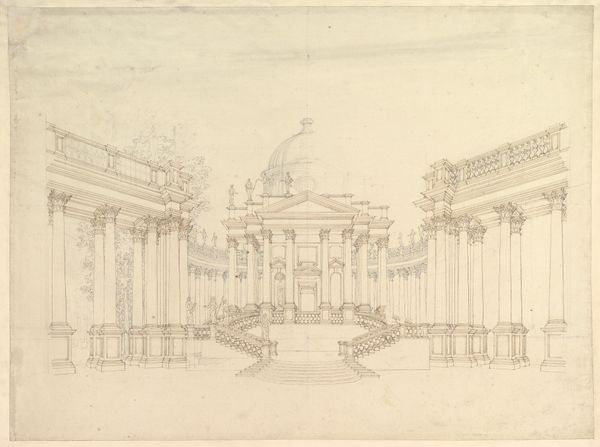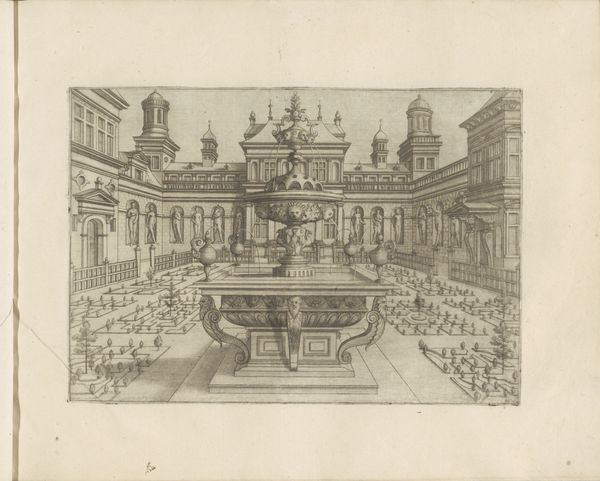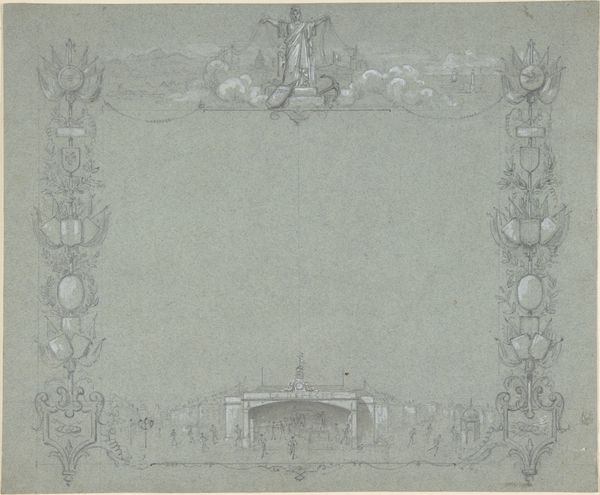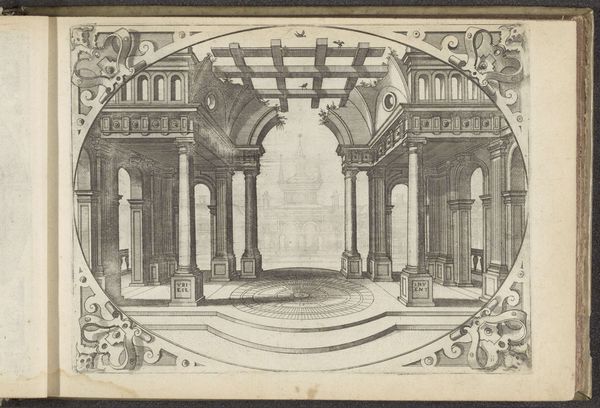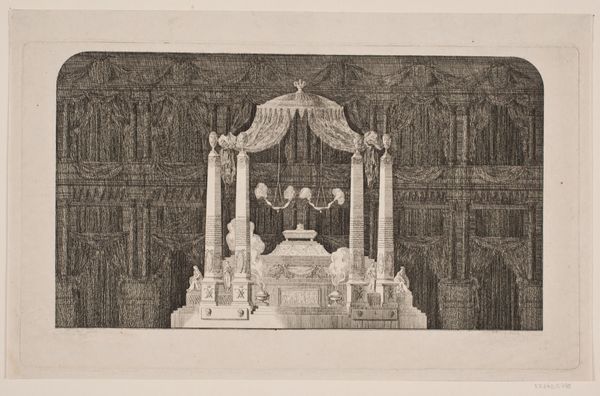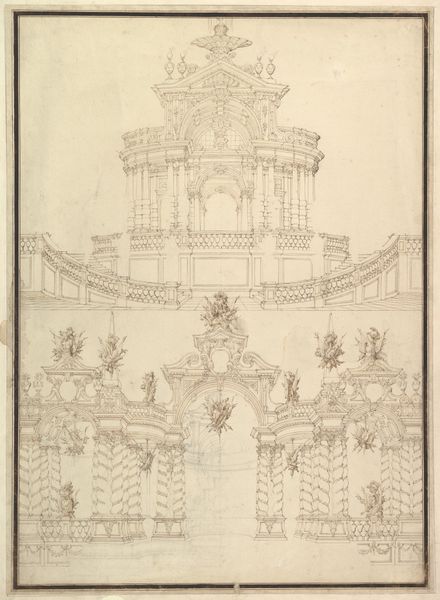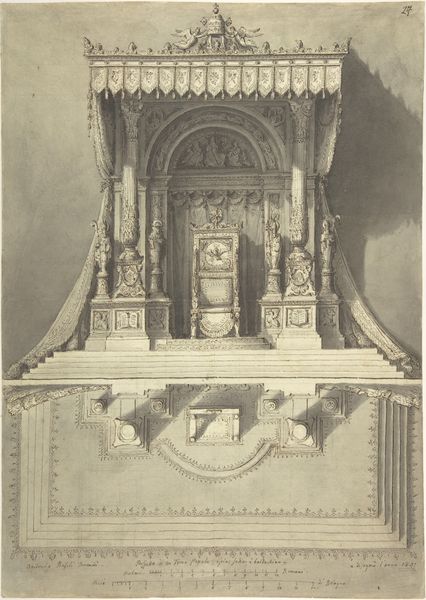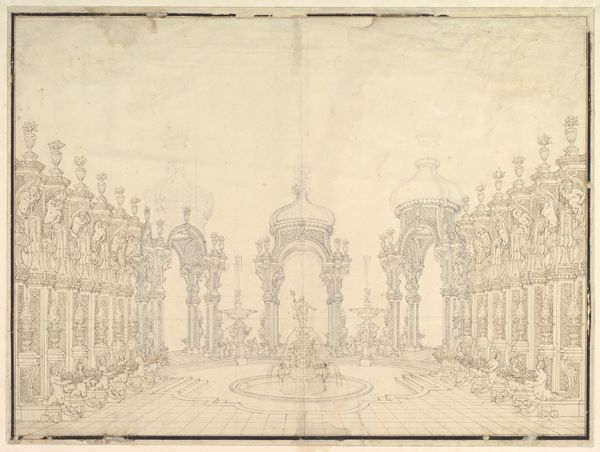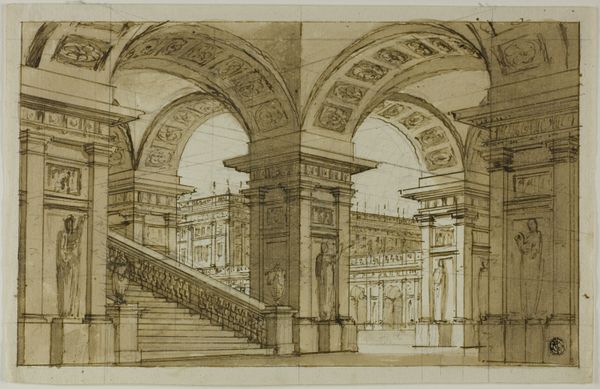
print, engraving, architecture
#
baroque
# print
#
landscape
#
cityscape
#
engraving
#
architecture
Dimensions: height 505 mm, width 715 mm
Copyright: Rijks Museum: Open Domain
Editor: This engraving, "Illuminatie van het theater te Den Haag voor de Vrede van Aken, 1749," captures a cityscape with some serious baroque vibes. I'm struck by how the illumination almost transforms the architecture into a stage set, with those heavy curtains framing the scene. What stands out to you in terms of symbolic meaning? Curator: The illumination itself speaks volumes. Light, often a symbol of enlightenment or divine presence, bathes this theatre, built to celebrate the Peace of Aachen. Peace is never merely the absence of conflict; it requires construction, a staging. The light emphasizes this active, performative aspect of peacemaking. Notice the reflections in the water – how might you interpret their psychological weight? Editor: The reflections add to the theatrical feel, like a dreamscape or memory. Almost as if the image itself carries the weight of past celebration. Curator: Precisely. And the symmetry! Baroque art loved symmetry, order. Here it signifies not just aesthetic harmony but perhaps a hope for social and political harmony, an ordered world following the chaos of war. The architecture becomes a stage for societal values. Consider the text cartouche too; how does it interplay with the visual rhetoric? Editor: I see the inscription seems to solidify the event in collective memory, making the print itself an artifact performing cultural work. The details really are thought-provoking! Curator: Indeed. Think of prints like this as more than just representations. They served as active participants in shaping public perception, reminding viewers of shared values and the promise of a peaceful future. And even now, centuries later, we’re engaging in a kind of echo of that original performance. Editor: That’s incredible, I’ll definitely look at prints differently from now on! Thank you for sharing such an insightful interpretation.
Comments
No comments
Be the first to comment and join the conversation on the ultimate creative platform.
